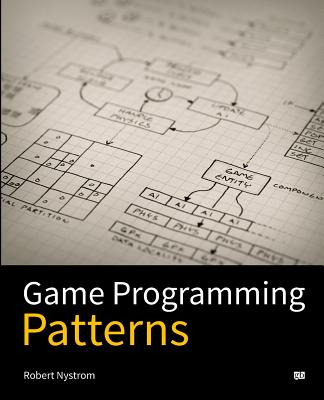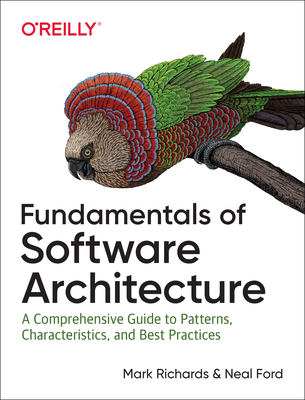High Availability Linux Architecture (LFS422) Training in San Angelo
Enroll in or hire us to teach our High Availability Linux Architecture (LFS422) class in San Angelo, Texas by calling us @303.377.6176. Like all HSG
classes, High Availability Linux Architecture (LFS422) may be offered either onsite or via instructor led virtual training. Consider looking at our public training schedule to see if it
is scheduled: Public Training Classes
Provided there are enough attendees, High Availability Linux Architecture (LFS422) may be taught at one of our local training facilities.
|
We offer private customized training for groups of 3 or more attendees.
|
||
Course Description |
||
| This course will teach you how to ensure that your servers stand up
under even the most intense pressure. Developed for some of the largest
Linux deployments in the world, this course will teach you: How to
create and maintain systems that allow for highly-available
applications. The concepts and best practices used to meet security and
high availability requirements using the latest hardware technologies.
You will also become familiar with tools that help you maintain and
operate highly-available systems easily. This course is designed to work
with a wide range of Linux distributions, so you will be able to apply
these concepts regardless of your distro.
Course Length: 4 Days
Course Tuition: $2200 (US) |
||
Prerequisites |
|
| This course is designed for IT managers, system administrators, DevOps, and technical personnel operating highly-available mission-critical Linux systems. Students should have a good working knowledge of fundamental operating system and hardware concepts and experience with network addressing and topologies. A basic foundation in mission critical deployments will also be beneficial. | |
Course Outline |
|
1. Introduction
Linux Foundation
Linux Foundation Training
Logistics
2. Day 1: The Basics
Course Objectives
Agenda
Mission Critical Systems
The Intel RAS Features
From Unix to Enterprise Linux
Linux distributions and commercial support
An Introduction To High Availability
Storage Options
3. Day 1: The Basics, Part 2
Advanced Open-Source Storage Solutions
Linux Distributions' HA Stacks
4. Day 2: Linux HA Stacks
Agenda
Linux High Availability Stacks
Introduction To Corosync
5. Day 2: Linux HA Stacks, Part 2
Introduction To Pacemaker
6. Day 2: Linux HA Stacks, Part 3
Node Fencing In Pacemaker Clusters
7. Day 2: Linux HA Stacks, Part 4
Highly Available MySQL With DRBD And Pacemaker
8. Day 3: Advanced Corosync/Pacemaker Clusters
Agenda
Resource Monitoring And Recovery With Pacemaker
9. Day 3: Advanced Corosync/Pacemaker Clusters, Part 2
Integrating Advanced Storage Solutions And Pacemaker
10. Day 3: Advanced Corosync/Pacemaker Clusters, Part 3
Highly Available Virtualization With GlusterFS And Pacemaker
11. Day 3: Advanced Corosync/Pacemaker Clusters, Part 4
Site Fail-Over With The Linux High Availability Cluster Stack
12. Day 3: Advanced Corosync/Pacemaker Clusters, Part 5
Cluster Maintenance And Upgrades
13. Day 4: Automating, Monitoring And Designing HA-Clusters
Agenda
Monitoring Linux-HA Clusters
Automating Linux-HA Cluster Deployments
Designing Systems For High Availability
Additional Considerations
Close
|
Course Directory [training on all levels]
Technical Training Courses
Software engineer/architect, System Admin ... Welcome!
- .NET Classes
- Agile/Scrum Classes
- AI Classes
- Ajax Classes
- Android and iPhone Programming Classes
- Azure Classes
- Blaze Advisor Classes
- C Programming Classes
- C# Programming Classes
- C++ Programming Classes
- Cisco Classes
- Cloud Classes
- CompTIA Classes
- Crystal Reports Classes
- Data Classes
- Design Patterns Classes
- DevOps Classes
- Foundations of Web Design & Web Authoring Classes
- Git, Jira, Wicket, Gradle, Tableau Classes
- IBM Classes
- Java Programming Classes
- JBoss Administration Classes
- JUnit, TDD, CPTC, Web Penetration Classes
- Linux Unix Classes
- Machine Learning Classes
- Microsoft Classes
- Microsoft Development Classes
- Microsoft SQL Server Classes
- Microsoft Team Foundation Server Classes
- Microsoft Windows Server Classes
- Oracle, MySQL, Cassandra, Hadoop Database Classes
- Perl Programming Classes
- Python Programming Classes
- Ruby Programming Classes
- SAS Classes
- Security Classes
- SharePoint Classes
- SOA Classes
- Tcl, Awk, Bash, Shell Classes
- UML Classes
- VMWare Classes
- Web Development Classes
- Web Services Classes
- Weblogic Administration Classes
- XML Classes
Business Training Courses
Project Managers, Business Analysts, Paralegals ... Welcome!
Upcoming Classes
Gain insight and ideas from students with different perspectives and experiences.
- Introduction to Spring 6, Spring Boot 3, and Spring REST
15 December, 2025 - 19 December, 2025 - See our complete public course listing
Linux Unix Uses & Stats
Linux Unix is Used For:
Desktop
Mainframe Computers
Mobile Devices
Embedded Devices
|
Difficulty
|
Popularity
|
Year Created 1991/1971 |
|
Pros
Performance:
Linux supports many efficient tools and operates them seamlessly. Because it's architecture is lightweight it runs faster than both Windows 8.1 and 10.
Security:
Because Linux is an open-source software, anyone can contribute code to help enhance the users’ experience i.e., adding features, fixing bugs, reducing security risks, and more.
Software Development:
The terminal in Linux is a *wild card*. You can do almost anything with it. This includes software installation, application and server configurations, file system management, and etc.
Large-scale:
Open-source projects benefit from having an attentive community. As a result, Linux is more secure than Windows. Instead of installing anti viruses to clean malware, you just have to stick to the recommended repositories.
Efficient:
Developers have the convenience of running servers, training machine learning models, accessing remote machines, and compiling and running scripts from the same terminal window.
Free:
Linux is free (you can put it on as many systems as you like) and you can change it to suit your needs.
|
Cons
Learning Curve:
Linux is not for everyone, there is a learning curve in switching to Ubuntu. To actually learn Linux efficiently would take a user one to several years.
No Tech Support:
Unlike Windows, there isn’t a dedicated tech support, so getting help for things is up to you.
Designer Compatabilty:
Linux is not as user friendly as Windows or as ‘straight out of the box design’ As an example for design choices, Adobe hasn’t released any of its products to Linux users. So it’s impossible to run them directly. The Ubuntu alternative is a free software called GIMP.
Gaming Capabilities:
Most games aren’t available in Linux. But that’s not to say you can’t make it happen, it's just not as easy.
|
| Linux Unix Job Market |

Average Salary
|

Job Count
|

Top Job Locations
New York City |
|
Complimentary Skills to have along with Linux Unix
The following are types of jobs that may require Linux skills. The top 15 job titles on Dice.com that mention Linux in their postings are:
- DevOps Engineer
- Software Engineer - Java Developer - Systems Engineer - Systems Administrator - Senior Software Engineer - Network Engineer - Python Developer - Linux Systems Administrator - Software Developer - System Administrator - Linux Administrator - Linux Engineer - Senior Java Developer - C++ Developer |






